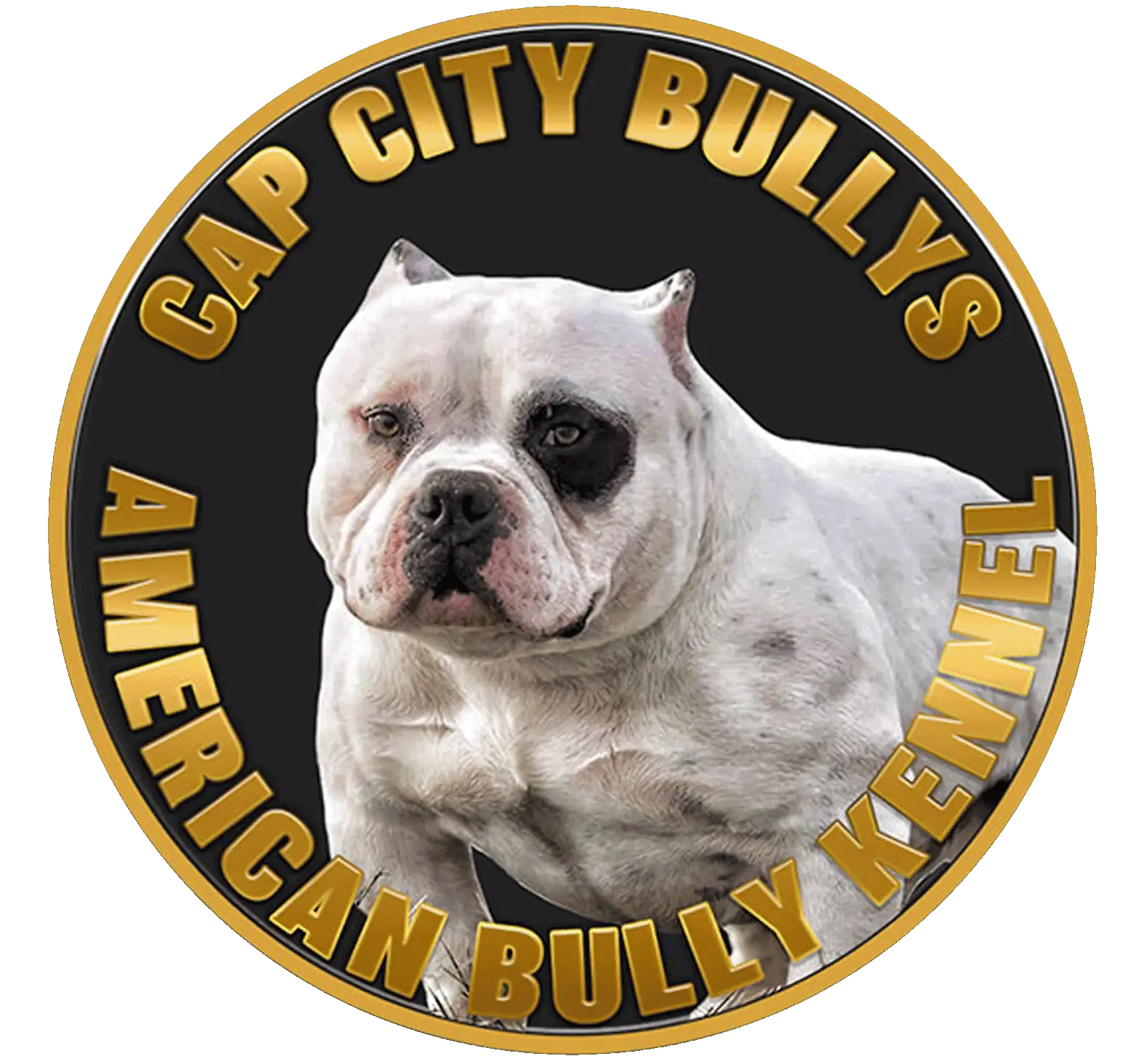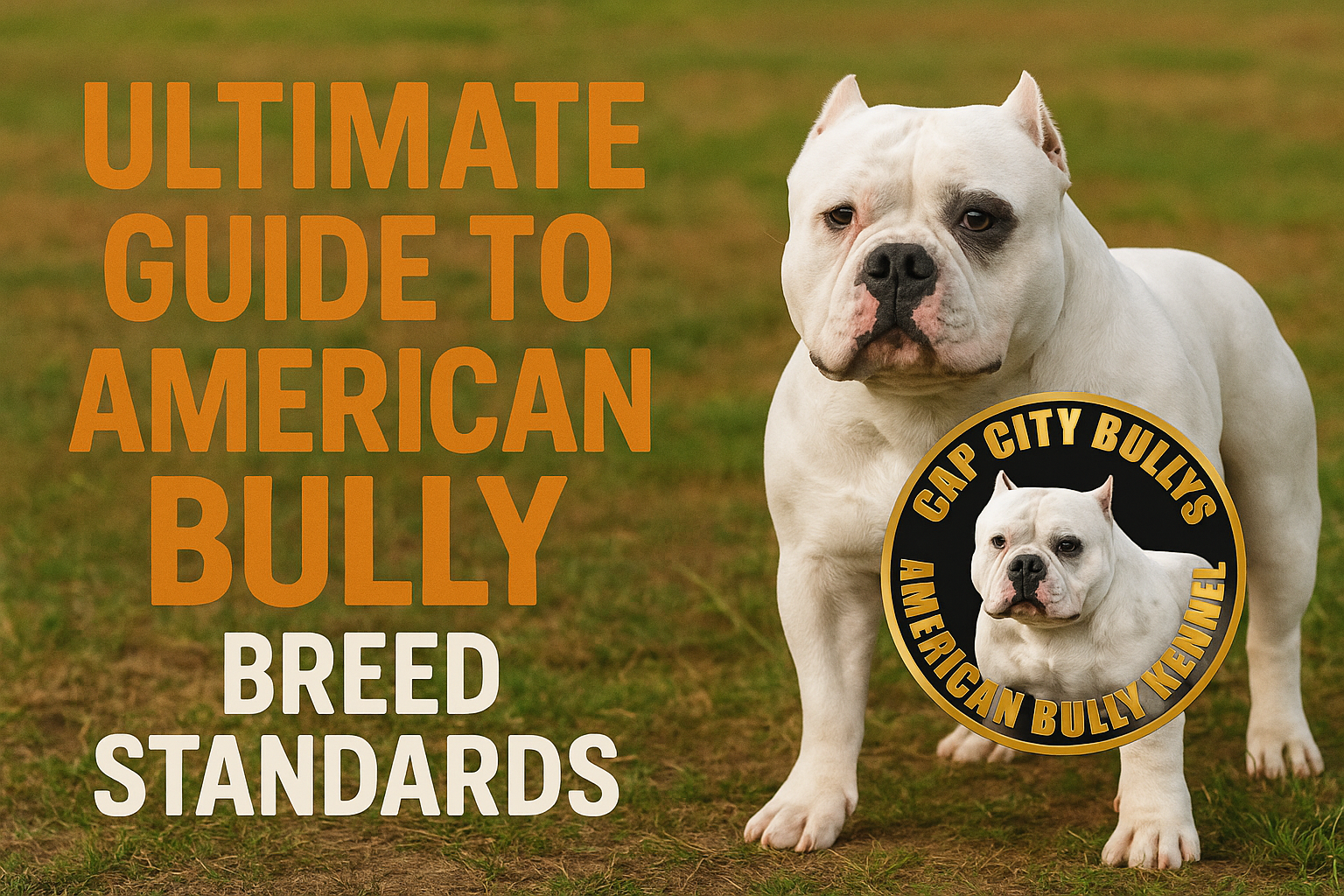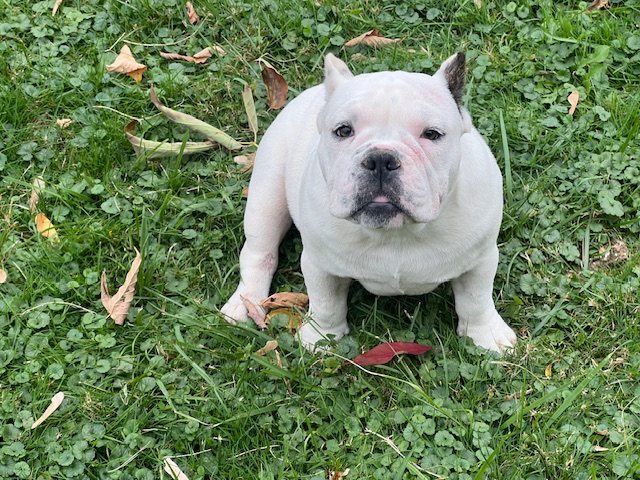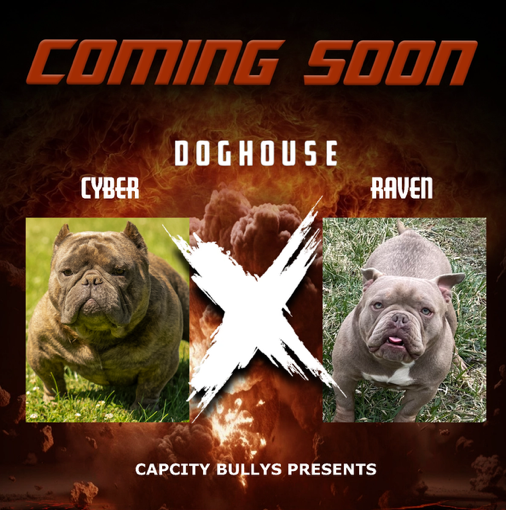Dive deep into the world of American Bullies—from their fascinating origins and recognized categories to the nitty-gritty of physical traits, temperament, health considerations, and everything in between. Whether you’re a first-time owner or seasoned enthusiast, this guide has you covered.
Introduction
If you’ve ever scrolled through Instagram and stopped dead at that picture-perfect, muscular pup with that big blocky head, you know the American Bully has taken the canine world by storm. But beyond the chiseled physique and undeniable swagger, there’s a structured set of breed standards that define what makes an American Bully an American Bully. In this definitive guide, I’ll walk you through everything you need to know—history, recognized classes, anatomy breakdowns, temperament notes, health tips, and how to choose the right breeder and puppy for your family.
By the end, you’ll:
- Understand the four main American Bully categories and how they differ
- Know exactly what physical features judges and enthusiasts look for
- Be equipped to spot red flags when selecting a breeder
- Have a solid handle on nutrition, exercise, and training essentials
- Feel confident about registration, contracts, and health guarantees
Ready? Let’s roll.
History and Origin
From Classic Pit to Modern Bully
The American Bully didn’t just appear overnight. In the late 1980s and early ’90s, dedicated breeders in the United States wanted a dog with the essence of the American Pit Bull Terrier—loyalty, confidence, drive—but with a more compact, muscular structure, and a wider head. By crossing Pit Bull bloodlines with breeds like the American Staffordshire Terrier, Olde English Bulldogge, and even occasionally the English Bulldog, they slowly sculpted what we now celebrate as the American Bully.
Formal Recognition
In 2004, the American Bully Association (ABA) was founded to establish clear breed standards. Over the next decade, additional registries like the United Kennel Club (UKC) and United Kennel Club Bully Pro divisions came on board, each with its own slight variations in the standard. Despite registry differences, the core emphasis remains on balance—muscular but agile, formidable yet affectionate.
Recognized American Bully Categories
American Bully enthusiasts generally recognize four primary classes. Picking the right category for your lifestyle and show ambitions is crucial.
- Standard
- Description: Classic Bully look—well-muscled without exaggeration
- Height (males): 17–20 inches at the withers
- Height (females): 16–19 inches
- Pocket
- Description: Essentially a shorter Standard, more compact
- Height (males): 14–17 inches
- Height (females): 13–16 inches
- Classic
- Description: More lean and athletic, less bulk than Standard
- Height: Similar range to Standard, but with lighter bone structure
- XL
- Description: Trades some compactness for impressive height and mass
- Height (males): 20–23 inches
- Height (females): 19–22 inches
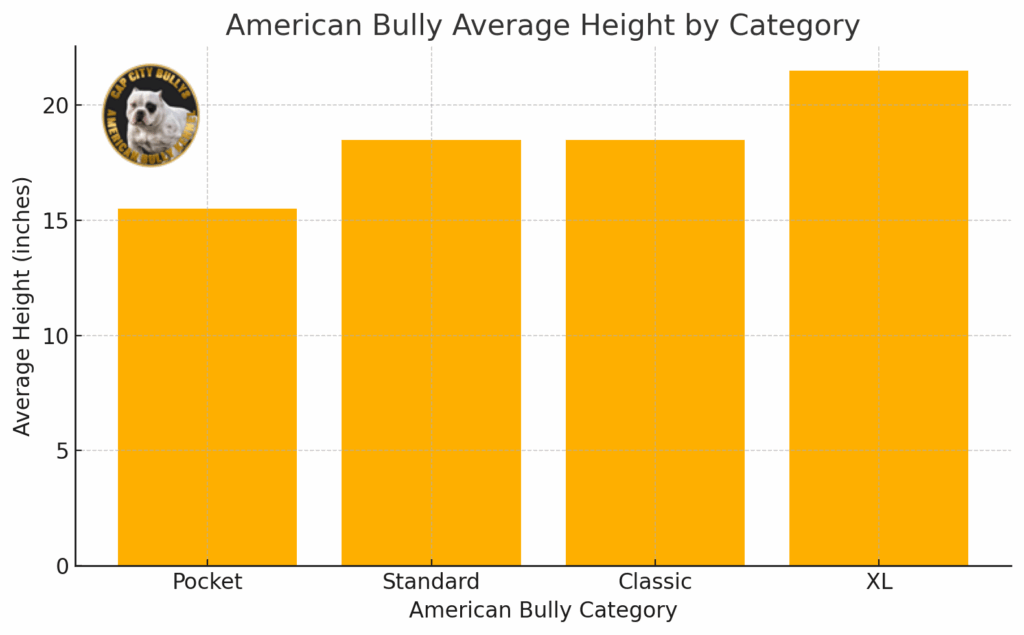
Opinion: Personally, I find the Standard class the most versatile—muscular enough to turn heads, but agile enough for everyday play. If you love that “lionhearted” look without going full XL, Standard is your sweet spot.
Physical Characteristics: Size, Weight & Build
Overall Impression
An American Bully should look like a powerful athlete at ease. The body is compact and muscular, yet it retains a smooth, well-defined silhouette.
Height & Weight
- Pocket: 13–17 inches, 30–60 lbs
- Standard/Classic: 16–20 inches, 60–80 lbs
- XL: 19–23 inches, 80–120+ lbs
(Note: Weight can vary based on bone density and muscle mass.)
Proportions & Balance
- Length to Height Ratio: Slightly longer than tall—typically a 10:9 ratio from point of shoulder to rear.
- Chest: Deep and wide, with well-sprung ribs.
- Back: Straight and level, allowing efficient movement.
Example: I once judged a Pocket Bully that, despite only being 15 inches tall, had a chest so deep it could practically barrel-roll through the agility weave poles. That’s textbook balance for you.
Head & Facial Features
Shape & Size
- Width: Broad and blocky, giving that signature “bull” look.
- Length: Short to medium, without being overly foreshortened.
Skull & Muzzle
- Skull: Pronounced cheek muscles that blend smoothly into a broad skullcap.
- Stop: Distinct but not exaggerated—a gentle slope from forehead to muzzle.
- Muzzle: Square, deep, and well-defined.
Eyes & Ears
- Eyes: Medium size, set low and wide on the skull—intelligent and alert. Colors vary, but clarity and expression matter most.
- Ears: Can be cropped or natural. Natural ears are rose or semi-prick.
Opinion: Nothing says “Bully boss” like a dog whose head fills your palm. But beware of exaggeration—if the muzzle is so short that breathing looks labored, you’re veering into unhealthy territory.
Coat, Color & Markings
Coat Type
- Texture: Short, glossy, and close to the body.
- Care: Low maintenance—weekly brushing to keep it sleek and healthy.
Recognized Colors & Patterns
- Solids: Black, blue, lilac, fawn, red, cream
- Patterns: Brindle, tri-color, pied, merle
- Markings: White on the chest, toes, or blaze is acceptable.
Tip: Always check for color-specific health issues—merle patterns, for instance, can be linked to hearing and vision problems if not responsibly bred.
Temperament & Character Traits
Friendly Yet Fearless
American Bullies are renowned for combining a bold, confident nature with genuine affection. You want a dog that’s game for the park but also content to cuddle on the couch.
Key Traits:
- Loyalty: They bond deeply with their family.
- Confidence: Not easily spooked—ideal for novice or experienced handlers.
- Trainability: Smart and eager to please when trained with positive reinforcement.
- Social: Generally tolerant of children and other pets when socialized early.
Example: My neighbor’s Bully, “Zeus,” once calmly escorted a lost German Shepherd pup back to its owner—no hostility, just cool-headed Bully bravery.
Health & Genetic Considerations
Breeding for exaggerated features can invite problems. Responsible breeders balance breed standards with health testing.
Common Health Screens
- Hips & Elbows: X-rays to rule out dysplasia.
- Heart: ECG or echocardiogram to detect murmurs.
- Eyes: Annual CERF exam to catch inheritable issues.
- Thyroid: Bloodwork to check function.
Health Guarantees & Contracts
At Capcity Bullys, every puppy comes with a comprehensive health guarantee and clear purchase contract outlining responsibilities and recourse—because protecting the pup’s well-being starts day one.
Opinion: Skip breeders who can’t or won’t show you test results. Health paperwork isn’t a bureaucratic extra—it’s your dog’s safety net.
Registration & Breed Organizations
Getting your Bully registered properly is vital for show prospects and proving pedigree.
Major Registries
- American Bully Kennel Club (ABKC)
- United Kennel Club (UKC)
- International Bully Registry (IBR)
Each has its own twist on the standard, but all recognize the four main classes. Registration ensures your dog’s lineage is documented and can be a prerequisite for sanctioned events.
Tip: When in doubt, go with the registry your breeder primarily uses—consistency matters for title tracking and event eligibility.
Choosing Your American Bully: Breeder & Puppy Selection
Finding a Responsible Breeder
- Transparency: Open access to facilities, pedigrees, and health records.
- Socialization: Puppies exposed to people, sounds, and handling before 8 weeks.
- Lineage Knowledge: Breeder can explain how specific bloodlines influence size, color, and temperament.
At Capcity Bullys, we welcome visitors to tour our kennels and meet our current breedings—seeing is believing.
Puppy Purchase Contract
A solid contract protects both parties. Look for clauses on:
- Genetic health guarantees
- Return or rehoming clauses if life circumstances change
- Payment schedules and deposit terms
Download our sample puppy purchase contract to see exactly what a thorough agreement looks like.
Caring for Your Bully: Nutrition, Exercise & Training
Nutrition Essentials
A high-quality, protein-rich kibble paired with occasional fresh food is my go-to. Look for:
- Real Meat First: Chicken, beef, fish, or lamb.
- Balanced Fats: For coat sheen and brain health.
- Limited Fillers: No corn or wheat by-products.
Pro Tip: Supplement with joint support (glucosamine/chondroitin) and probiotics for gut health.
Exercise & Play
Bullies are surprisingly athletic. Aim for:
- Daily Walks: 30–60 minutes
- Interactive Play: Tug, fetch, or scent games
- Mental Stimulation: Puzzle feeders and obedience drills
Training Foundations
Positive reinforcement works wonders. Key commands:
- Sit/Stay/Down: The basics for household harmony.
- Leave It: Critical for impulse control.
- Recall: Should be rock-solid off-leash.
Enrolling in a local obedience class not only fine-tunes skills but also socializes your pup with both dogs and humans.
Common Misconceptions & FAQs
“They Must Be Aggressive”
Reality: Well-bred Bullies are people-oriented and friendly. Aggression often stems from poor socialization or mishandling.
“They Can’t Swim”
Reality: While Bullies aren’t natural paddlers, most learn quickly with gentle introduction and life jackets.
“Bulldog + Pit = Health Problems”
Reality: Responsible breeders focus on health testing. When done right, Bullies can be as healthy as any medium-sized breed, with lifespans around 10–12 years.
Conclusion
The American Bully is more than just a muscular canine—it’s a testament to careful breeding, league-standard conformation, and that unique blend of confidence and devotion. From understanding the precise breed categories and physical standards to navigating health tests, breeder selection, and day-to-day care, you now have the ultimate toolkit.
If you’re ready to take the next step—whether that’s downloading our in-depth e-book on the American Bully, browsing our active breedings, or reviewing our puppy purchase contract and health guarantee—visit our homepage to get started.
Here’s to raising a Bully that’s as healthy, happy, and head-turning as the standard intends. Welcome to the pack!
Welcome to Cap City Bullys — The #1 Choice for Show-Quality American Bully Puppies
At Cap City Bullys, we’ve spent 15+ years perfecting the art of breeding purebred, registered American Bully puppies that stand out for their muscular conformation, rock-solid health, and calm, even temperaments. Located in Erie, Pennsylvania, our family-run kennel serves bully enthusiasts from New York to California—and ships champion-line puppies safely across the globe.
